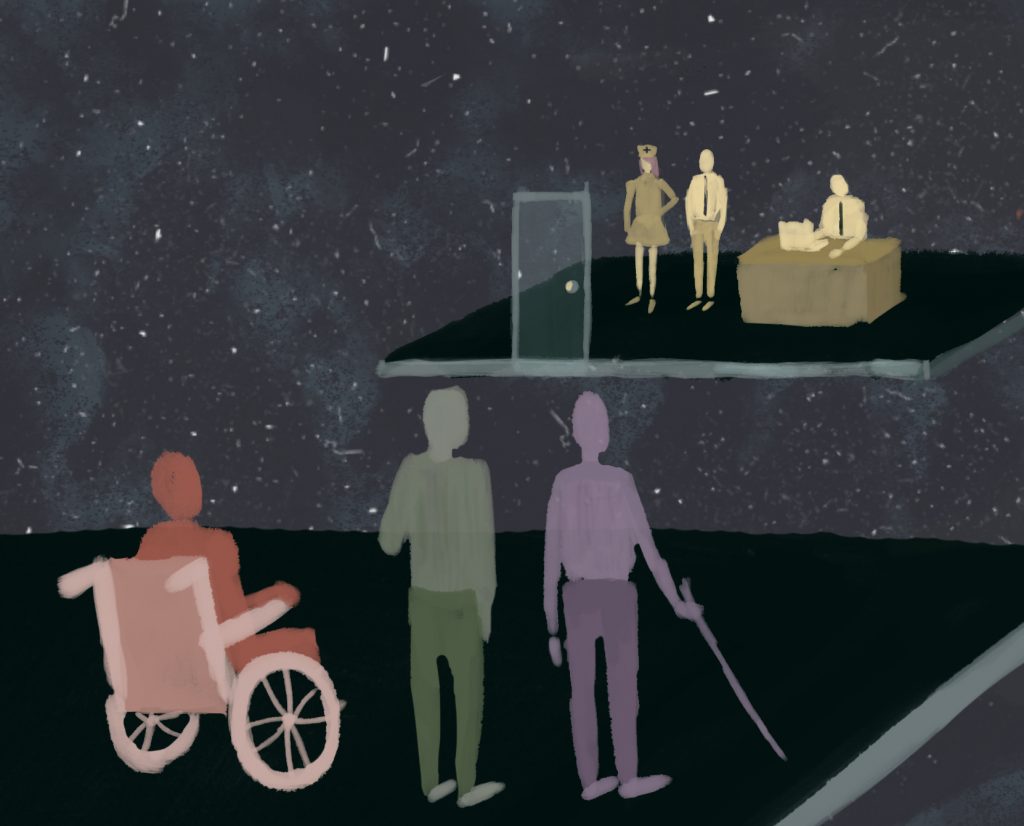For students with disabilities at Binghamton University, navigating college both inside and outside the classroom is no small task.
If a student has a physical disability that hinders their ability to walk, there is a staggering number of staircases that they must circumvent to get to their destination. For instance, the outdoor stairs between the University Union and the Fine Arts Building provides a huge obstacle for those who cannot walk up or down stairs.
Candace Mulcahy, associate professor and chair of the department of teaching, learning and educational leadership, pointed to this example, among others, demonstrating the lack of accessibility on campus. Aside from stairs, she drew attention to an issue seldom talked about: on-campus signage.
“For individuals with low vision or mobility, the lack of clear, consistent signage in high visibility areas added an additional challenge,” she wrote in an email.
Additionally, with the recent renovations over the summer, the University had the opportunity to make the campus more accessible. Instead, one of the renovations entailed putting a staircase in place of the ramps coming down from Mountainview College, making campus more difficult to navigate for those with physical disabilities. The Editorial Board questions why accessibility is not prioritized when considering renovations. Moreover, the lack of accessibility sends a negative message to prospective students with disabilities.
For students with disabilities that affect their experience in the classroom, getting accommodations is a strenuous process. According to a column written by former Opinions Editor Jessica Gutowitz in April 2018, students must contact the Services for Students with Disabilities (SSD) office prior to the start of the semester and provide proof of their disability. The next step is to meet with an SSD representative to discuss the accommodations. Finally, a letter is written describing the student’s needs. The student then must request the letter be sent to each of their professors and set up individual meetings with them to work out the appropriate accommodations.
While the Editorial Board commends SSD for its work on the campus community, we find this process unnecessarily complicated. Multiple students have reported experiencing difficulty getting through all the steps, and others have said that simply the thought of going through the process makes it seem unworthy of the trouble. We believe there must be a way to streamline the accommodations procedure, which is clearly integral to students’ academic success.
There are a number of possible solutions to BU’s accessibility problem. To start, the SSD should work more closely with professors. The office can, at the very least, send letters out to its registered students’ instructors on its own. Likewise, students should not be required to meet with instructors about their accommodations unless they want to; accommodation letters should be descriptive enough on their own. Having to set up individual meetings with multiple professors to talk is an unnecessary hassle.
According to Mulcahy, the University could also utilize universal design, which is a method of design that considers how to make spaces accessible for everyone. She suggested lowering light switches and using curb cuts with bumps to indicate approach to a street. Moreover, Mulcahy wrote that adopting universal design would benefit the campus as a whole.
“The point of Universal Design and Universal Design for Learning is to create more inclusive physical and learning environments,” she wrote. “Rather than retrofitting, which can be ugly and inconvenient in a physical environment … and segregates individuals in both physical and learning environments, creating accessible spaces fosters inclusivity and sends the message that Binghamton University is for EVERYONE.”
The Editorial Board hopes the University will begin to make accessibility a priority. To ensure the success of all of its students, the first step should be to guarantee students the necessary accommodations.



